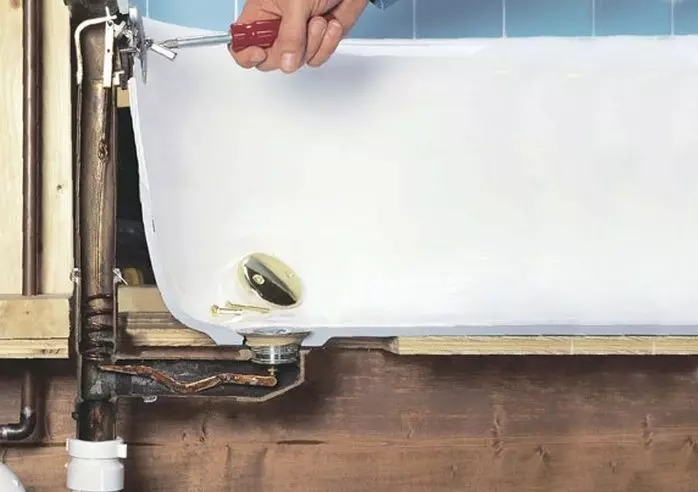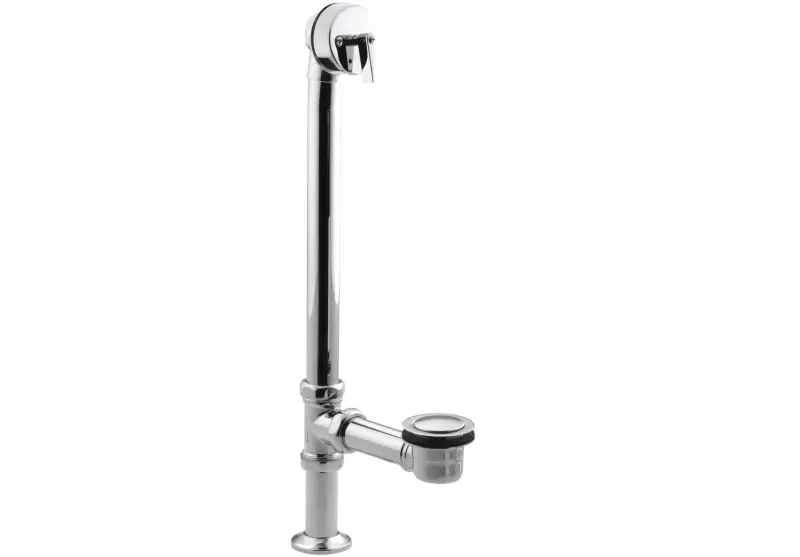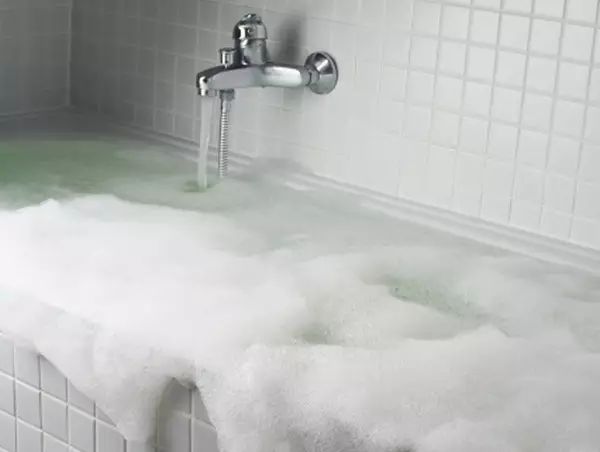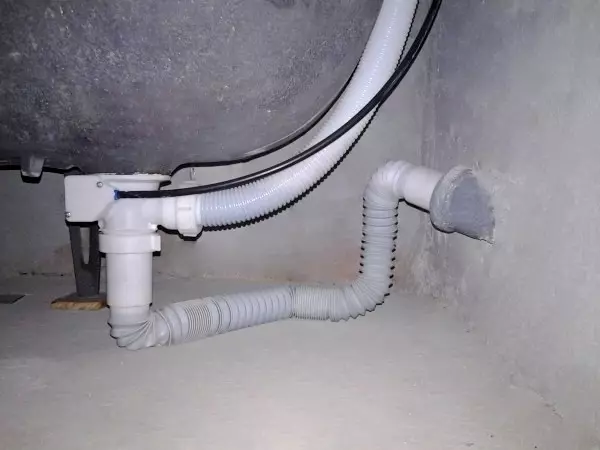
Purpose of strapping
The strapping is called a sanitary siphon under the bathroom through which water drops into the sewer. The second name of the strapping is a plot-overflow. It has the lower and upper hole - draining and overflow, respectively.
After draining, water from the bathroom enters the pipe, and overflow is needed so that water does not shivered through its edges. The siphon combines the data of the holes and are tied. Such a system saves the bathroom from flooding. But if the intensity of the water set in the bathroom is too high, then even it will not be able to help. The strapping has also become popular through the simplicity of design and installation.

Varieties of materials for strapping
Today a large number of types of strapping are sold, but they are all mainly made of two materials:
- High strength plastic. This is the most common option in private houses and apartments. The advantage of the plastic system in its durability, because it is not amenable to rust and destruction in wet conditions. It can be cleaned with practically any chemical means, and its cost is available to each family. But the plastic sink-overflow has some minuses. The material itself can be damaged at accidental impact or inept installation. The constant action of hot water leads to the deformation of the pipe where it was incorrectly installed.
- Metal. Most often, copper, bronze and brass are used as a metal, less often - steel. But such strapping have more minuses than advantage of use. When installing the system must be customized to apply the necessary tools. Metal pipes are much faster clogged, rust may appear on their surface, and some means lead to the destruction of the metal.


Types of designs in design
To select the most appropriate sprinkling system for the bathroom, it is necessary to deal with the design features. According to this criterion, the following varieties of strapping are distinguished:
- Universal. It consists of a siphon, drain and overflow receivers, spill-up and removal for the sewer tube. Plug is located approximately 5 cm from the edges of the bath. Externally, it is closed with a grid, so that large objects do not fall. From the inside, the emission tube connecting it with a nozzle is connected to the opening. If the water level in the bathroom reaches overflow, it merges along the tube and enters the sewer, excluding the flooding of the room.
- Automatic. This system was first suggested by the German company Kaiser. Its difference from the universal system consists only in another plug design, but the overflow system is almost the same. The plug has a special spring, which opens and closes the drain automatically. A person needs to push the foot on a special lever to bring a plug into action. It is very convenient and aesthetically attractive. It is worth remembering that such a strapping has a complex design, so it is necessary to buy it only the production of well-known firms.
- Semi-automatic . In such a system, there is a similarity with automatic. To control the strapping, a special receiver with control unit, cork and cable is used. As a control unit, a valve or a plug applies. Under it is placed overflow. When a person acts on the block, then through the cable action falls on the plug. You can even not water your hands in the water, because it is enough just to influence the block for opening the hole.
Article on the topic: crafts from the cones: What can be made of spruce and pine cones for home with children (100 photos)



Advantages of strapping
The main dissentee use of the strapping is to prevent the water overflow during the edges of the bathroom. This system is one, for overflow does not need a separate drain into the sewer.
Of the advantages of automatic and semi-automatic systems, you can note the convenience of use. They look better than a simple overflow, you do not need to bend for their discovery, but only click on the lever or open the valve.

Any suspension system is very easy to install. Of course, it is much more difficult to establish a metal strapping, which also needs high-quality sealing. Therefore, experts recommend choosing plastic systems that are much cheaper.
Replacing and installing strapping
The installation process depends on many factors, including the type of strapping, manufacturing material, and so on.
The standard installation procedure is divided into the following steps:
- Dismantling of the old system. Refractory from plastic can not even unscrew, but just break. Dismantling of the metal system can take some time. If the pipes are not unscrewed, you will have to use a grinder. In its operation you need to be extremely generally in order not to damage the bath itself.
- A new system is checked, namely, all the parts are suitable for fastening to the pipes, and whether there are sealing elements.
- Lattices are disconnected from both holes.
- If there is an opportunity, the bath is better turned over to install the siphon and the receiving tube correctly. But if the bathroom is cast iron, then it is quite difficult to do it.
- The drain hole is fixed with a grid and fasten the entire design with a tighter bolt. You should not pinch a plastic structure very much, because it can just burst.
- Packing tube is mounted in the same way. At the same time, the corrugation is stretched to the desired size.
- In the set of strapping can be 4 or 2 pads. In the first case, they are installed on both sides of the bathroom for draining and overflow. In the second case, they are installed from the outside to eliminate leaks.
Article on the topic: Minimalism in the interior of the cafe

Thus, the strapping (drain-overflow) is simply necessary for any bathroom. Without it, you can easily flood the entire room and the neighbors from the bottom.
